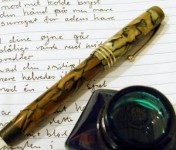JANAK ENTERPRISE - AHMEDABAD
- Home
- Janak Enterprise
- Stationery Dyes
Stationery Dyes
Stationery in general includes all items needed for writing. Typical applications are writing utensils for everyday use like fountain pens, ballpoint pens, pencils, felt-tip, gel pen pens and fine liner pens. Other items are more likely to be found in offices, such as highlighters, whiteboard markers, permanent and non-permanent markers, and stamp-pads. Many quality requirements for stationery colorants are very similar to the ones for inkjet applications and demand similar properties and quality standards. In addition, writing instruments and stamp-pads need to display special features for special ink systems such as document proof inks, invisible inks and erasable inks. Specific requirements are:
High color strength, especially for black and blue, violet inks worldwide compliance with regulations for environmentally safe products, and absence of sensitive by-products high surface tension and low viscosity for consistent ink flow.
As in the conventional printing environment, the ink chemistry must be matched with the appropriate fiber type to ensure permanent color fixation. The selections of colorants vailable make it possible to print a wide variety of fiber types:
Acid dyes – silk, nylon and wool Reactive dyes – cotton, rayon, linen and silk Disperse dyes – polyester Pigments – not fiber specific, often used for cotton and blends
Color Fixation
Most print system requires post-processing to enable the fixation processing to occur. While dye basedprinting systems all involve penetration of the fiber, pigment printing involves adhesion of the color to the fiber via a binder.
Reactive & Acid dyes – normally require color fixation in the presence of steam at atmospheric conditions. Reactive dyes typically require less than 15 minutes of steaming, while acid dyes normally require at least 30 minutes of steaming.
How to print cmyk on a textile gallery !!
Test the ink to determine if it is pigment ink or dye-based ink. Check the manual or place a bit of yellow ink on glass. If the ink is vibrant and not opaque, it is pigment ink









